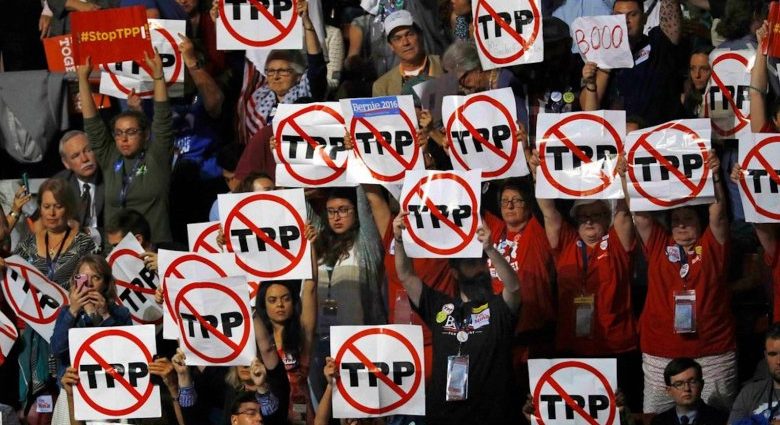Under President Joe Biden, the United States has stepped up its campaign to build out and expand its geostrategic position in the Indo-Pacific. Japanese Prime Minister Fumio Kishida’s recent White House visit was a significant payoff for this strategy.
The visit was preceded by Japan’s announcements in December 2022 of a new security strategy, including the doubling of defense spending to 2% of Japan’s GDP. The two leaders also agreed to beef up Japan’s missile strike capabilities.
Over the past two years, the Biden administration has moved to strengthen the Quad and progress the AUKUS agreement dialogue with a view to countering a more assertive China in the Indo-Pacific.
US Secretary of Defense Lloyd Austin labeled the Indo-Pacific as the “heart” of US “grand strategy” and vowed to defend the region — including Taiwan — from coercion “without flinching.”
Though not perfect, Biden’s security policy for the region has advanced American interests. Why, then, has US geoeconomic policy lagged behind?
After both Hillary Clinton and Donald Trump opposed the Trans-Pacific Partnership (TPP) in the 2016 US presidential election, and the United States withdrew from the agreement, politicians across both parties have subscribed to the idea that a regional Pacific trade deal was politically impossible.
This is despite the fact that US public opinion became increasingly favorable to international trade and trade agreements after 2016.
The Biden administration faced deep divisions among Democratic Party interest groups on trade policy when it came to office.
Labor and environmental groups, represented by progressive members of Congress, were deeply skeptical of trade deals without ironclad provisions on issues such as labor rights, environmental regulations and social justice advances regarding inclusiveness and sustainability.

US Trade Representative Katherine Tai is closely aligned with progressive doubts about more open markets and globalization.
She has generally downplayed the benefits of the post-war global trading system, arguing that US trade agreements have led to greater inequality, deindustrialization, offshoring and the destruction of manufacturing communities.
Tai and others in the Biden administration have called for a new US trade policy paradigm that eschews traditional legal commitments for market access in favor of giving top priority to “worker-centric” social justice goals.
These views were echoed in the administration’s National Security Strategy published last October which stated: “Recognising we have to move beyond traditional Free Trade Agreements, we are charting new economic arrangements to deepen economic engagement with our partners like the Indo-Pacific Economic Framework for Prosperity (IPEF).”
The 14-member IPEF was launched in May 2022 following months of preliminary talks throughout Asia. The initiative will consist of four pillars. Three pillars on clean economy, fair economy and supply chains will be headed by the US Secretary of Commerce, while the final trade pillar will be headed by the US Trade Representative.
Topics of negotiation in the trade pillar include agriculture, trade facilitation, labor, environment, regulatory practices and the digital economy.
Given the fraught security realities in the region, Indo-Pacific nations have welcomed a sign of renewed US commitment to the Pacific. But a combination of omissions and potential overreach may continue to cloud ongoing negotiations.
Future durability and US constancy are major issues. The IPEF will take the form of an executive agreement and will not be submitted to Congress. Despite the administration’s claims to the contrary, the negotiations in coming months will not be legally enforceable — as with traditional free trade agreements (FTAs) — and could be revised or abandoned by succeeding administrations.
The claim that the United States must “move beyond traditional Free Trade Agreements” is out of step with other trading nations, which have negotiated over 350 FTAs, with more being completed each month.
The US decision to take market access off the table removes major incentives for IPEF nations to agree to some of the United States’ more novel negotiating objectives in areas such as labor and the environment. Promises of future development and financial assistance cannot match a commitment by the United States for more access to the world’s largest economy.
IPEF members from Southeast Asia are wary, if not hostile, to US plans relating to labor, environment, corruption and regulatory mandates. As one perceptive analyst has written: Southeast Asian countries “think Western concern about issues like labor standards and green trade standards are hypocritical slogans’ and excuses for protectionism.”

Although these nations accepted some reforms in the TPP, any US attempt at ironclad commitments, such as those in the “rapid response, facility specific” labor provisions in the USMCA, will backfire.
The United States needs to be flexible in negotiations to conclude the IPEF — and reconsider its position on market access concessions. It is already behind on Asian geoeconomic priorities as China now leads the just completed 15-member Regional Comprehensive Economic Partnership and has applied to join the successor of the TPP, the Comprehensive and Progressive Trans-Pacific Partnership agreement.
It’s past time for the United States to catch up.
Claude Barfield is a Senior Fellow at the American Enterprise Institute and a former consultant to the office of the US Trade Representative.
This article, republished with permission, was first published by East Asia Forum, which is based out of the Crawford School of Public Policy within the College of Asia and the Pacific at the Australian National University.

